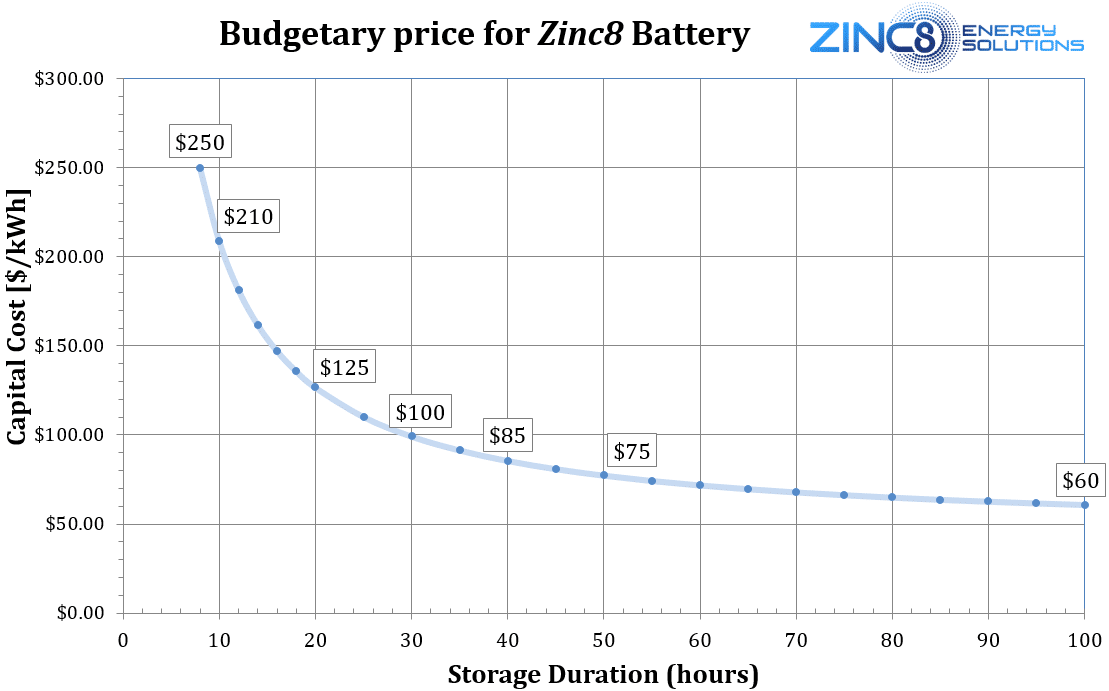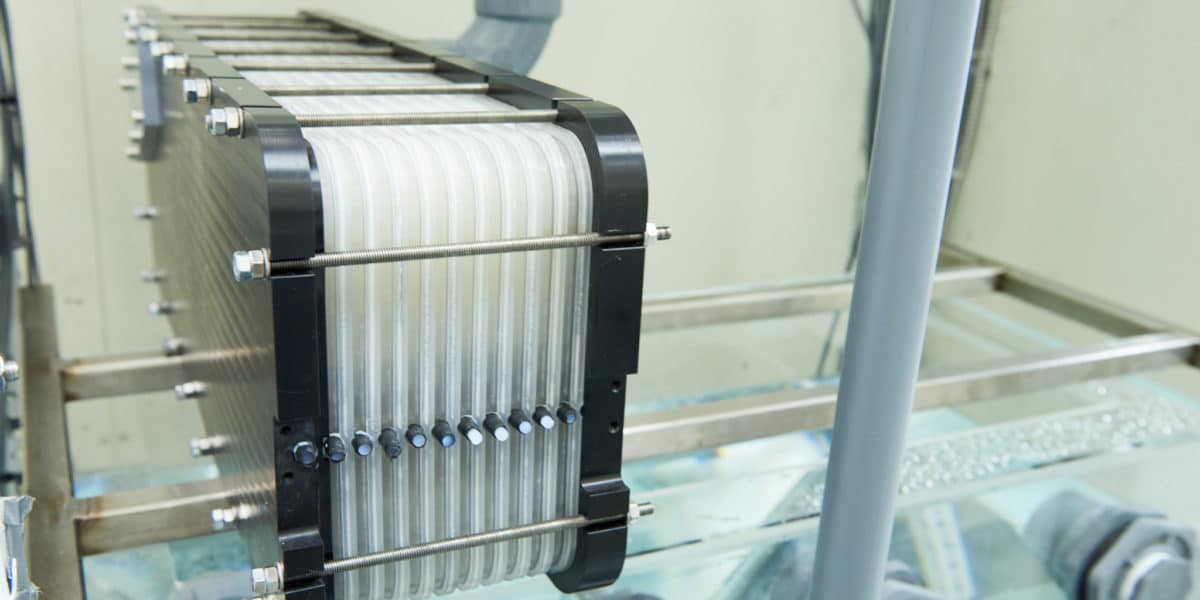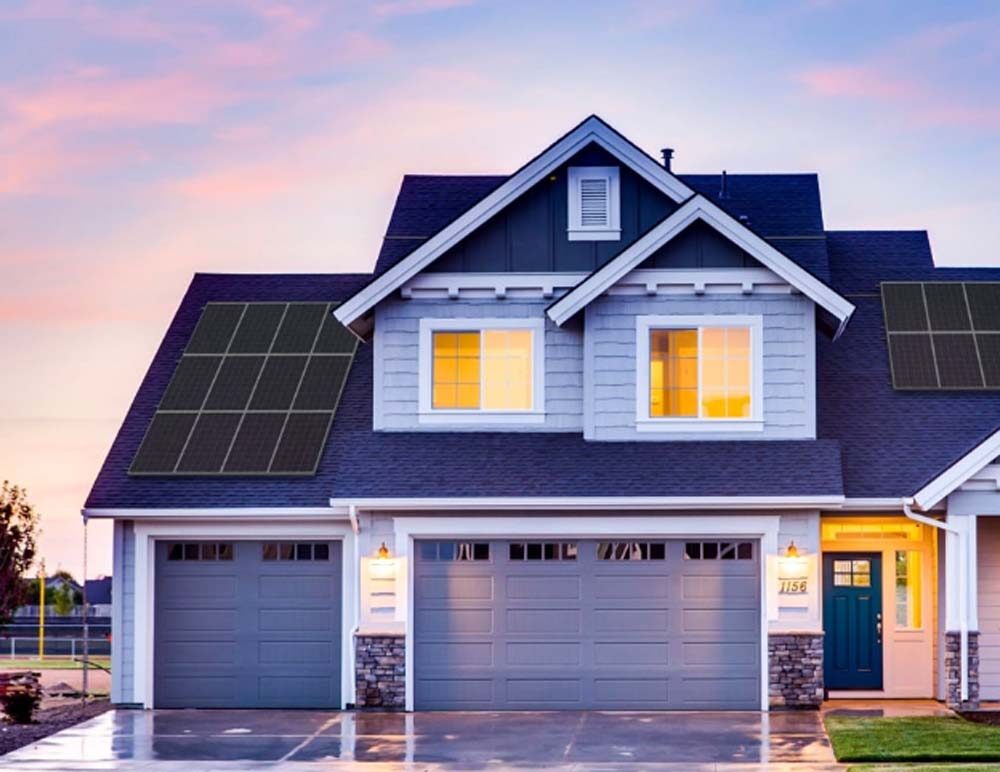It’s been suggested that to get the U.S. to 80% wind+solar power, we’d need enough energy storage to power the nation for twelve hours – roughly 5.4 TWh worth.
Zinc8 Energy builds a twelve-hour battery, and is aiming for longer duration and an extremely low price. pv magazine spoke with CEO Ron McDonald about the company’s target price of $45 per kWh.

The money
The price of the 100 kW/1 MWh battery the company is building for the New York Power Authority is confidential, but is projected to be $210/kWh. This first unit will be delivered in a shipping container designed for demonstration and easy inspection access of the hardware.
The more important number though is $45/kWh.
If a 100 kW/800 kWh system is installed, the cost is $200,000 at $250/kWh. Expanding the system to run for 18 hours straight requires the addition of a single shipping container with 1 MWh of additional capacity. That new capacity will cost an additional $45,000 — or $45/kWh.

This is possible because the expensive part of the machine — the cathodes, membranes, and other gear — have already been purchased. One only needs to connect the new shipping container and its very cheap zinc solution ($10/kWh for raw materials) via hoses and pumps.
The technology
McDonald claims that Zinc8 has solved the “dendrite problem” which leads to clogging of the membranes used in flow batteries. Solving this challenge, along with the broader development of the technology, has cost $84 million over the course of 14 years, according to the company.
These investments have produced a product with a 65% to 70% round trip efficiency.
The company, with its ~22 lab personnel, is now focused on developing its manufacturing processes. The size of the New York installation allows for the purchase of the machines needed to mass produce various components.
The battery’s projected first round of operations and maintenance is at 20,000 operating hours. For a product designed to run eight or twelve hours a day, this is 4.5 to almost 7 years. Though the cost of this O&M wasn’t disclosed, McDonald noted it was included in the cost structure put out to the public.
Deployment
Before that 20,000 hours hits though, the gear must be installed. And while the New York project will have a site chosen by the end of the first quarter, since this is a brand new product to the whole chain of those who have influence on approvals — the company doesn’t expect commissioning to occur until 2023.
The next challenge will be gaining UL certification. McDonald said that one of the company’s senior engineer’s full-time job is working with the testing authority.
Only after getting UL certification can the company apply for permitting. Which again, will be a new process for a new product with utilities and local authorities having jurisdiction and their own safety responsibilities. The company expects this first project to commission in 2023.
Zinc8 has a long, uphill fight, but it’s fighting in a space — long-term storage — that isn’t really inhabited by anyone yet.
This content is protected by copyright and may not be reused. If you want to cooperate with us and would like to reuse some of our content, please contact: editors@pv-magazine.com.








Granted, it is at optimal conditions and for a new product, but Tesla claims a round-trip efficiency of 92.5% (https://en.wikipedia.org/wiki/Tesla_Powerwall#:~:text=The%20Tesla%20Powerwall%20has%20a,the%20product%20is%20brand%20new).
Given how these products will be used, how do we also take into consideration the cost impact of round trip efficiency? IIndeed, it would seem that there are a number of variables to consider and account for, including initial cost, longevity, round-trip efficiency (and its changes over time), weather conditions that affect efficiency, length of storage/(discharge), power to energy (i.e., rate at which energy can be summoned as needed), and end-of-life costs. Perhaps these are not amenable to a formula, and essentially require a spreadsheet for comparison.
Definitely want to have a spreadsheet included. I assume use case will also be a driving factor, but I’m not experienced enough in how to make use of long-term storage yet. There’s going to be a unique resilience valuation for that long term.
The ZnO reduction potential is outside water’s stability window. How will you prevent evolution of hydrogen?
@jzj The round trip efficiency matters most if the price of generation is high–and sometimes it is quite high. But mostly the per kWh price continues to fall–and in those cases the RTE becomes less relevant. Kudos to Zinc8 for this commercial breakthrough, although we really don’t know the numbers for their system. To me, it’s a boost for the promise of zinc based battery chemistry–which, has signifiant advantages over lithium–including heat, explosion risk and most importantly lower bill of materials costs. As players like Fluidic/Nant and AZA Battery gain traction could zinc battery chemistry be the future? We will see…